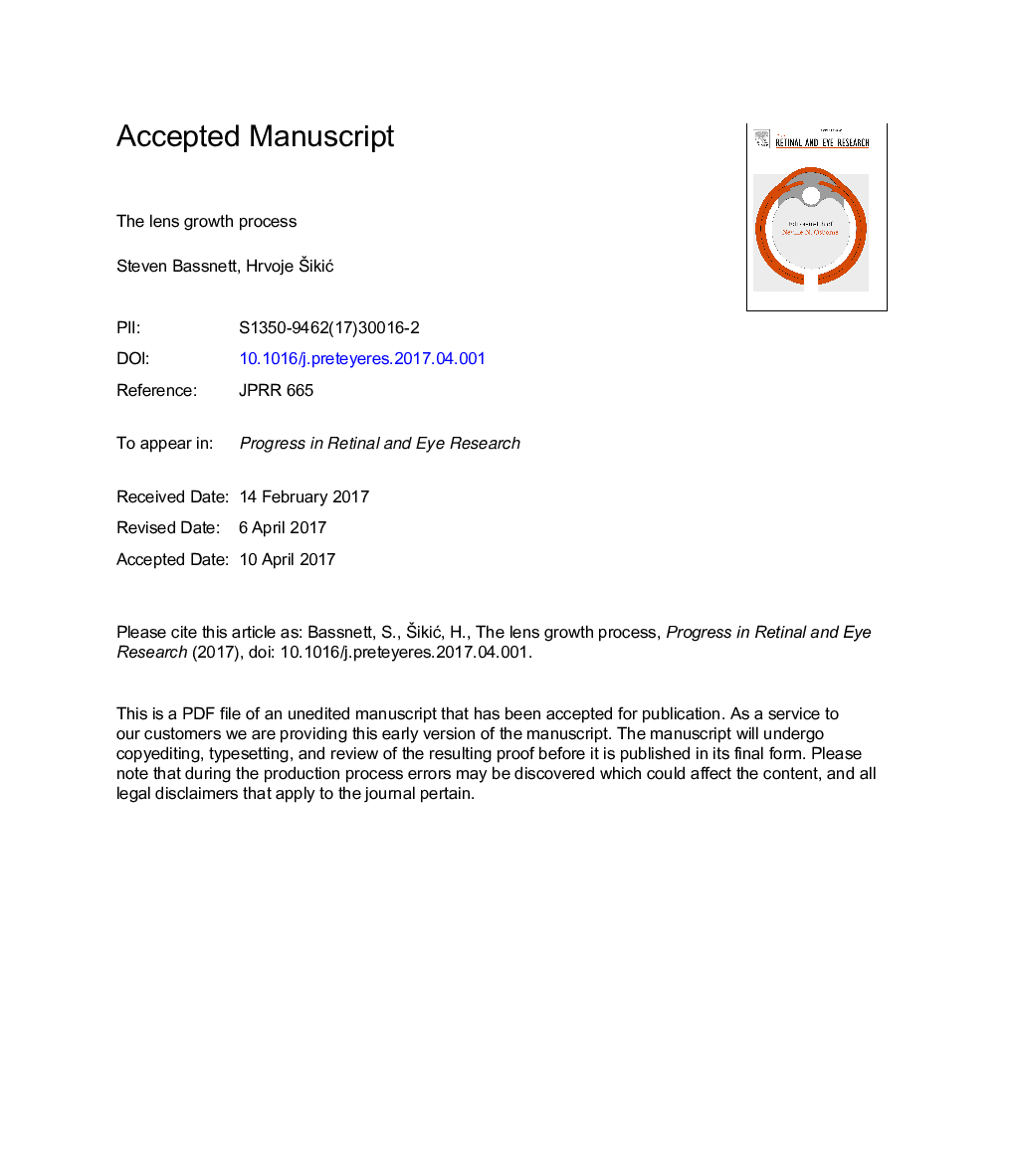| کد مقاله | کد نشریه | سال انتشار | مقاله انگلیسی | نسخه تمام متن |
|---|---|---|---|---|
| 5705657 | 1602806 | 2017 | 58 صفحه PDF | دانلود رایگان |
عنوان انگلیسی مقاله ISI
The lens growth process
ترجمه فارسی عنوان
فرآیند رشد لنز
دانلود مقاله + سفارش ترجمه
دانلود مقاله ISI انگلیسی
رایگان برای ایرانیان
کلمات کلیدی
ترجمه چکیده
عواملی که اندازه اندام را تنظیم می کنند تا اطمینان حاصل کنند که در یک موجود زنده قرار دارند، به خوبی قابل درک نیست. یک عضو ساده، لنز چشم به عنوان یک مدل مفید برای حل این مشکل عمل می کند. در بسیاری از سیستم ها، واریانس قابل توجهی در روند رشد اندام قابل تحمل است. این تقریبا مطمئنا موردی در لنز نیست که علاوه بر راحتی در داخل چشم، باید دارای اندازه و شکل مناسب باشد تا نور را به شدت بر روی شبکیه متمرکز کند. علاوه بر این، لنز عملکرد جداگانه ای از خود ندارد. رشد آن، که در طول زندگی ادامه می یابد، باید با سایر بافت های قطب نوری هماهنگ باشد. در اینجا، ما بررسی فرایند رشد لنز را از جزئیات تحقیقات بالینی پیشین در اواخر قرن نوزدهم تا بینشهایی که اخیرا در جریان مطالعات سلولی و مولکولی صورت گرفته است، بررسی می کنیم. در طول رشد جنین، لنز از اکتودریم سطح تشکیل می شود. درنتیجه، جمعیت سلول پیشرونده در سطح آن قرار دارد و سلولهای متمایز به داخل محدود می شوند. بنابراین تعاملاتی که سلول سرطانی را تنظیم می کنند، در داخل هندسه بیضوی اجباری لنز رخ می دهد. در این زمینه، مدل های ریاضی به ویژه ابزار مناسب برای بررسی روند رشد هستند. علاوه بر شناسایی عوامل تعیین کننده رشد، این مدل ها چارچوبی برای ادغام داده های بیولوژیکی و نوری سلولی را تشکیل می دهند که به تشخیص ارتباط بین بیان ژن در لنز و کیفیت تصویر در صفحه شبکیه کمک می کند.
موضوعات مرتبط
علوم زیستی و بیوفناوری
علم عصب شناسی
سیستم های حسی
چکیده انگلیسی
The factors that regulate the size of organs to ensure that they fit within an organism are not well understood. A simple organ, the ocular lens serves as a useful model with which to tackle this problem. In many systems, considerable variance in the organ growth process is tolerable. This is almost certainly not the case in the lens, which in addition to fitting comfortably within the eyeball, must also be of the correct size and shape to focus light sharply onto the retina. Furthermore, the lens does not perform its optical function in isolation. Its growth, which continues throughout life, must therefore be coordinated with that of other tissues in the optical train. Here, we review the lens growth process in detail, from pioneering clinical investigations in the late nineteenth century to insights gleaned more recently in the course of cell and molecular studies. During embryonic development, the lens forms from an invagination of surface ectoderm. Consequently, the progenitor cell population is located at its surface and differentiated cells are confined to the interior. The interactions that regulate cell fate thus occur within the obligate ellipsoidal geometry of the lens. In this context, mathematical models are particularly appropriate tools with which to examine the growth process. In addition to identifying key growth determinants, such models constitute a framework for integrating cell biological and optical data, helping clarify the relationship between gene expression in the lens and image quality at the retinal plane.
ناشر
Database: Elsevier - ScienceDirect (ساینس دایرکت)
Journal: Progress in Retinal and Eye Research - Volume 60, September 2017, Pages 181-200
Journal: Progress in Retinal and Eye Research - Volume 60, September 2017, Pages 181-200
نویسندگان
Steven Bassnett, Hrvoje Å ikiÄ,
